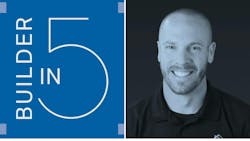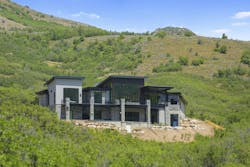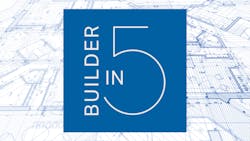Real Talk With a Park City Builder on Difficult, Dramatic Home Projects
Welcome to Builder in 5, our new interview series spotlighting the professionals who bring exceptional custom homes to life with skill, creativity, and grit. In five focused questions, we get into how they think, how they work, and what they’ve learned about process, pressure, and the craft itself.
First up: Adam Breen, president of Breen Homes, known for high-end custom builds in the dramatic terrain of Salt Lake City and Park City. He takes pride in “the difficult, the dramatic, the beautiful,” designing foothill and mountain homes that respond to site and client alike—particularly on lots others might pass over. Here, he shares thoughts on staying small, building presence, and chasing the intangible moments of a home’s “first breath."
1. What’s one decision you’ve made that defines how you build?
Adam Breen: I chose early on to keep Breen Homes intentionally small; boutique, not production. We take on just 3 to 5 homes per year so we can stay fully immersed. That means I’m not in a truck passing by job sites, I’m walking them. I’m in meetings, reviewing selections, problem-solving, celebrating team wins. That decision allows us to offer something rare in this business: presence. And that’s what makes the magic possible.
2. Tell us about a time you took a risk on a project—and it paid off.
Breen: There was a lot up in the mountains. It was tucked into a steep, unforgiving slope, and full of challenges. Other builders passed, but I saw the vision. The views were incredible, the location was gold, and the clients had a dream most would be too nervous to chase.
That included a full-sized pickleball court buried deep beneath a four-car garage. We had to excavate over 30 feet into solid earth, carving out a space that felt more like a hidden arena than a basement. It was engineering meets vision meets sheer determination.
We choreographed structural systems—massive retaining walls, complex waterproofing, precision sequencing—and watched as this subterranean dream took shape. We leaned in and ended up delivering one of the most stunning homes we’ve ever built. When the final paint dried and the court lights flicked on for the first time … that space, once just a wild idea buried in a topo map, came to life.
What started as a risk turned into a signature project that proved what we do best: solve hard problems with intention and beauty.
3. What’s the most expensive feature you’ve talked a client out of?
Breen: We actually try not to talk our clients out of anything. Our role isn’t to shut down a dream—it’s to guide it into reality. When a client brings us a big idea that doesn’t align with the budget or timeline, we work closely with the full team—architect, designer, engineer—to reimagine it in a way that still captures the original vision. That collaboration often leads to something even better than the first concept.
Over the years, we’ve done this with wine cellars, pools, pickleball courts, saunas, cold plunges, golf simulators, climbing walls, retractable glass walls, atriums, indoor basketball courts—the list goes on. Some stayed. Some evolved. But every one became a custom solution born from honest conversations and shared creativity.
4. What’s a detail you obsess over that clients might never notice?
Breen: I obsess over the moment when a house takes its first breath. When something shifts and the structure begins to feel like it has a soul. It’s hard to define, but I know it when I see it. It can come from the way the light floods through a window in the late afternoon, the way a hallway reveals a mountain view you didn’t expect, or the moment a massive steel door swings open and it feels like arrival.
Sometimes it’s the silence of the space that says: you’ve made it home. It’s never just about the materials or the finishes, it’s about the emotion they create.
I chase that spark on every project. It might happen during framing, or not until the final walkthrough. But when the vision clicks into place and the home starts to speak its truth—that’s the moment I live for. That’s when all the months of work, decisions, tension, and trust come together and create something that’s bigger than all of us.
5. How do you manage “design tension" on a team, especially between architect, client, and builder?
Breen: Building a custom home is like conducting a symphony of strong opinions, and I love it. Architects bring the vision, interior designers bring the product and storytelling, clients bring the emotion and personal connection, and we bring the experience to make it real. When things get tense, I slow everyone down and translate. I reframe the conversation around the why (the project mission statement) behind each decision. Once everyone feels heard and understood, we usually find a way forward that’s even better than where we started. That’s where the collaboration happens.
Our thanks to Adam. We’ll continue to explore how builders shape one-of-a-kind homes in future Builder in 5 interviews. To suggest a profile, send a note to [email protected]



